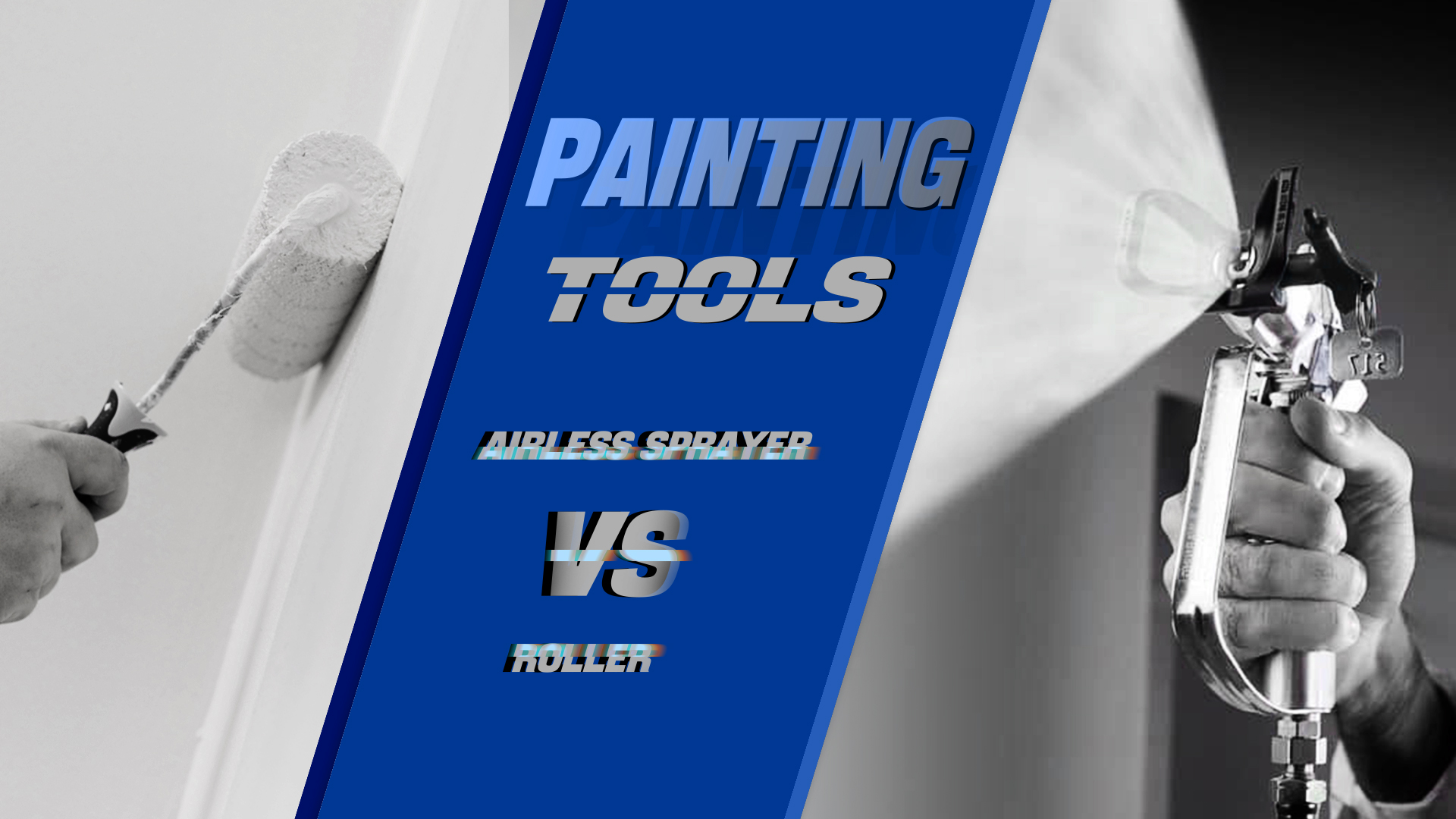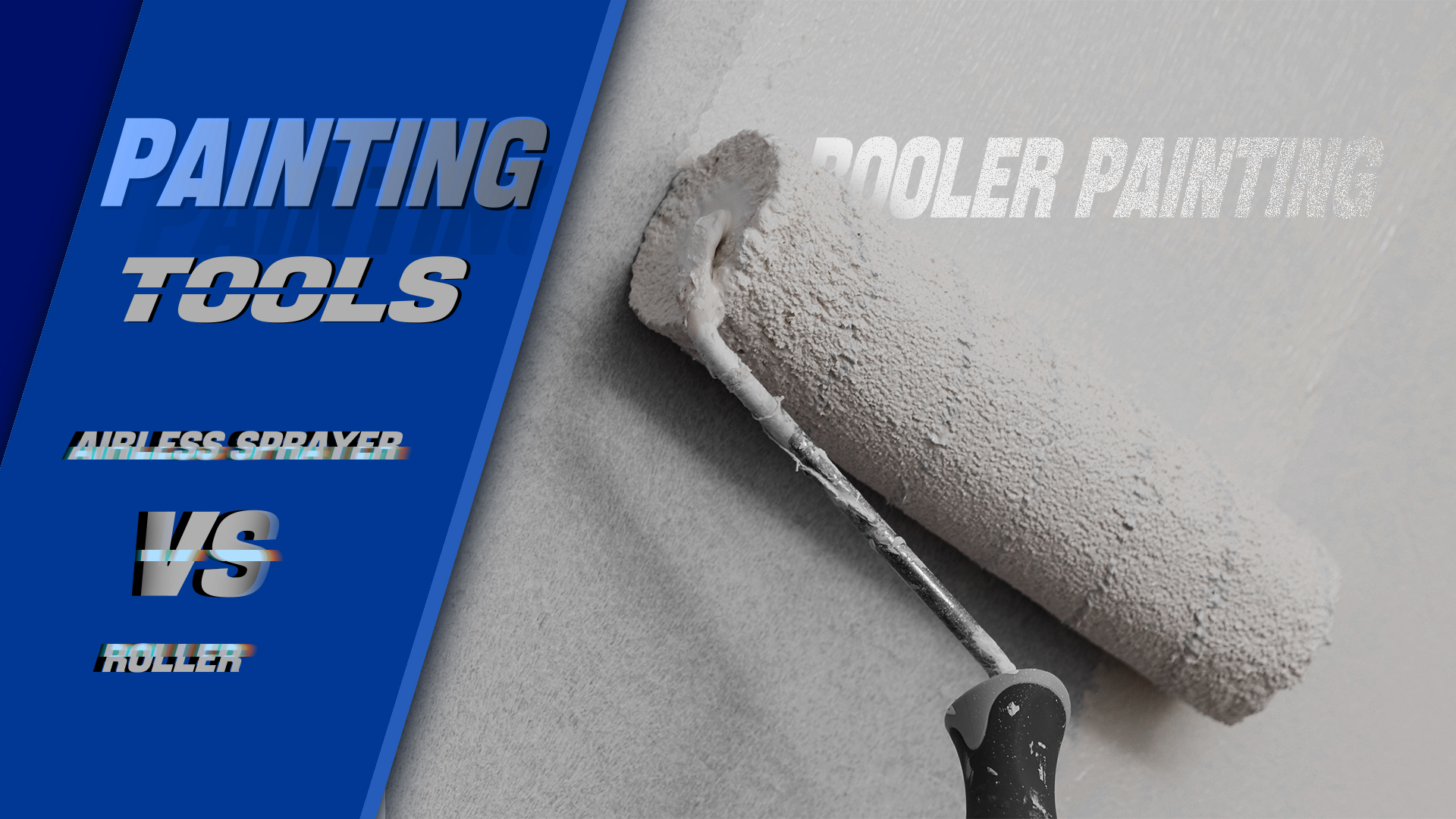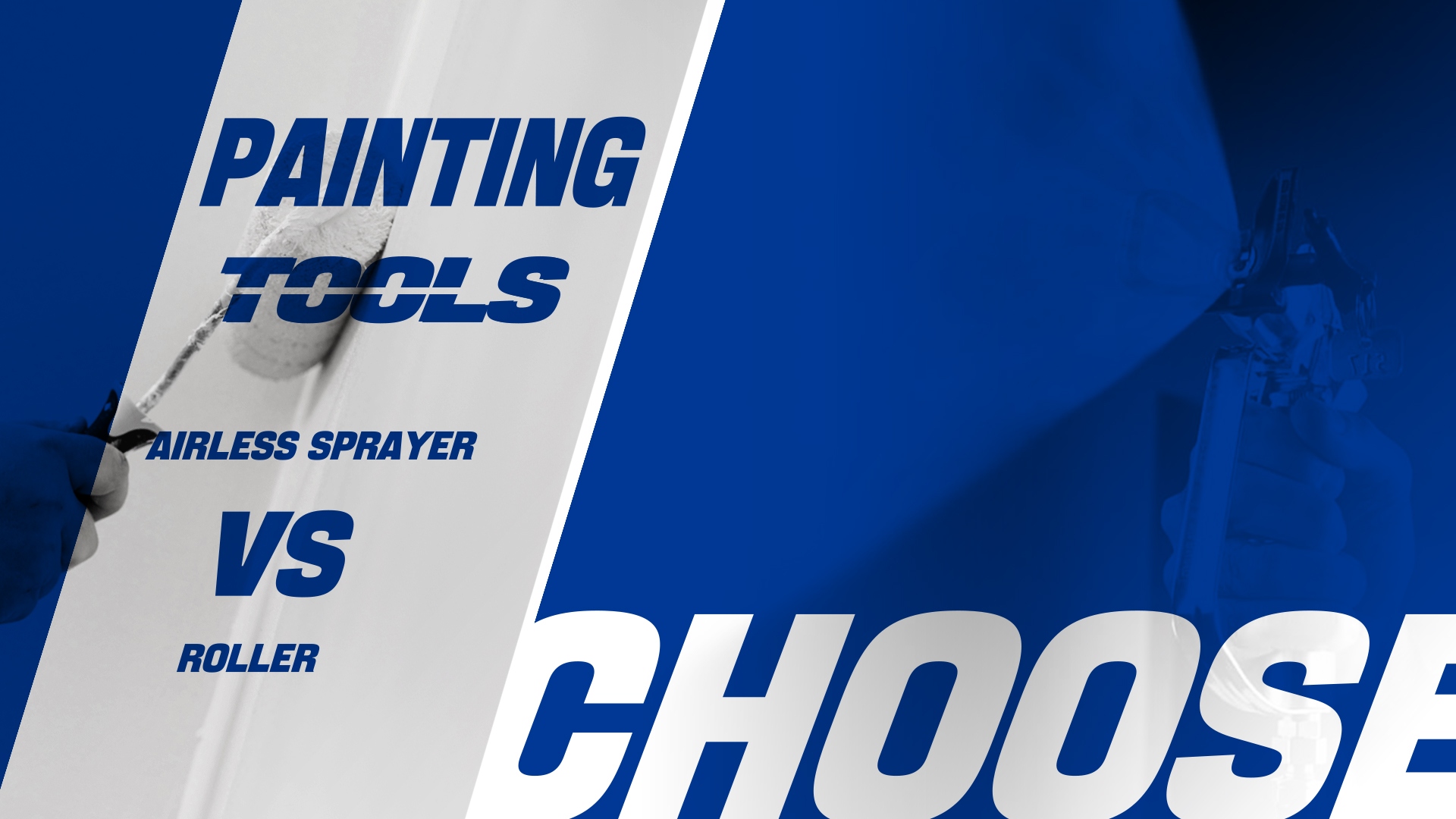Choosing the right tool can make or break your painting project. Whether you’re refreshing a home or tackling a commercial job, airless paint sprayers and rollers are two popular options, each with distinct strengths and limitations. The best choice depends on factors like surface type, project size, skill level, and desired finish. In this guide, we’ll compare airless sprayer vs roller across efficiency, quality, cost, and versatility to help you make an informed decision for your next painting project.
Understanding Airless Paint Sprayers
Airless paint sprayers are sophisticated tools engineered for high-efficiency painting, widely used in professional and large-scale projects.
Key Features of Airless Paint Sprayers
How Does an Airless Paint Sprayer Work: The principle of high-pressure airless paint spraying involves continuously delivering paint into the spray hose using a high-pressure pump, thereby creating high pressure in a closed space. When the trigger of the spray paint gun connected to the end of the spray hose is released, the pressurized paint is forced through the spray nozzle, atomizing into a fine mist that evenly coats the target surface.
Types: Available in electric paint sprayer, pneumatic paint sprayer, gasoline sprayer models, with pump options such as diaphragm or piston to suit various project needs.
Typical Uses: Employed in large-scale projects, such as exterior walls, ceilings, or textured surfaces like stucco and brick, where speed and coverage are critical.
Understanding Paint Rollers
Paint rollers are traditional tools valued for their simplicity and precision, widely used in both professional and DIY painting projects.
Key Features of Paint Rollers
How Does a Paint Roller Work: A roller cover absorbs paint and transfers it to surfaces through a rolling motion, allowing for controlled application on walls, ceilings, and other surfaces.
Typical Uses: Ideal for small to medium interior spaces, trim work, and DIY projects.
Airless Sprayer vs Roller: A Professional Comparison
In the airless paint sprayer vs roller comparison, airless paint sprayers typically excel in professional settings. Below is a detailed comparison of their key differences:
Advantages of Airless Paint Sprayers
High Spraying Efficiency: Offers significantly faster application and higher output, ideal for large-scale projects.
Reduced Overspray and Paint Rebound: Minimizes paint mist and bounce-back, ensuring cleaner application.
High Transfer Efficiency: Saves paint through efficient delivery, reducing material waste compared to rollers.
Handles High-Viscosity Paints: Applies thicker paints without excessive water dilution, maintaining coating quality.
Thicker Film in One Pass: Achieves a thicker coating in a single application, eliminating the need for multiple coats.
Strong Penetration and Bonding: Enhances mechanical bite between coating and surface, improving adhesion and durability.
Limitations of Airless Paint Sprayers
Skill Requirement: Requires practice to manage overspray and achieve consistent results.
Preparation and Cleanup: Needs extensive masking and more time-consuming cleanup compared to rollers.
Higher Initial Cost: More expensive upfront investment than rollers.
Advantages of Paint Rollers
Minimal Overspray: Produces little to no paint mist, reducing masking needs and cleanup time.
Cost-Effective: Lower upfront cost, making it a budget-friendly option for small projects.
Beginner-Friendly: Easy to use with minimal skill required, suitable for DIY enthusiasts.
Limitations of Paint Rollers
Low Efficiency: Slow construction efficiency due to time-consuming application, particularly for large areas.
Frequent Dipping and Drips: Requires constant dipping into paint, inevitably causing drips and spills.
Poor Surface Finish: Results in inferior surface effects with visible roller marks, or residual bristles.
Uneven Coating Thickness: Difficult to control coating thickness, leading to uneven application and paint waste.
Weak Bonding: Poor adhesion performance between paint and surfaces, reducing coating durability.
Limited to Low-Viscosity Paints: Struggles to handle high-viscosity paints, often requiring water dilution, which can compromise the paint’s physical properties.
Airless Sprayer vs Roller: Which One to Choose?
Choose an Airless Paint Sprayer for:
- Large-scale projects like exterior walls, ceilings, or fences.
- Textured surfaces (e.g., brick, stucco) where rollers struggle.
- Time-sensitive jobs requiring quick, high-quality results.
- Professional settings where efficiency and durability matter.
Choose a Paint Roller for:
- Small rooms and trim.
- Budget-conscious or one-off DIY projects.
Airless paint sprayers excel in more complicated applications, delivering superior results for professional painting tasks.
Why HVBAN Airless Paint Sprayers Stand Out
With over 20 years of expertise in fluid equipment, HVBAN delivers cutting-edge airless paint sprayers designed for professional painting projects. Key advantages include:
High Efficiency: Equipped with long-life Brushless DC motors, HVBAN sprayers cover large areas rapidly, reducing labor time.
Cost Savings: Minimize paint waste through high transfer efficiency, enhancing project profitability.
Versatility: Handle a wide range of coatings, from latex to high-viscosity paints, across diverse surfaces.
Smart Control: Feature intelligent systems for precise operation, improving ease of use and consistency.
Robust Construction: Built for durability, ensuring reliable performance in demanding environments.
HVBAN airless paint sprayers offer simple, efficient, and professional spraying solutions for your painting needs. Explore our airless paint sprayers to elevate your projects.
Conclusion
In the airless sprayer vs roller comparison, airless paint sprayers are the superior choice for professional and large-scale projects. Offering unmatched speed, efficiency, and quality, HVBAN’s airless paint sprayers empower professionals to achieve exceptional results. Ready to help your customers elevate their painting experience with top-tier tools?
Contact us today to learn about distributor pricing, samples, and exclusive partnership opportunities.
Post time: Jun-16-2025




